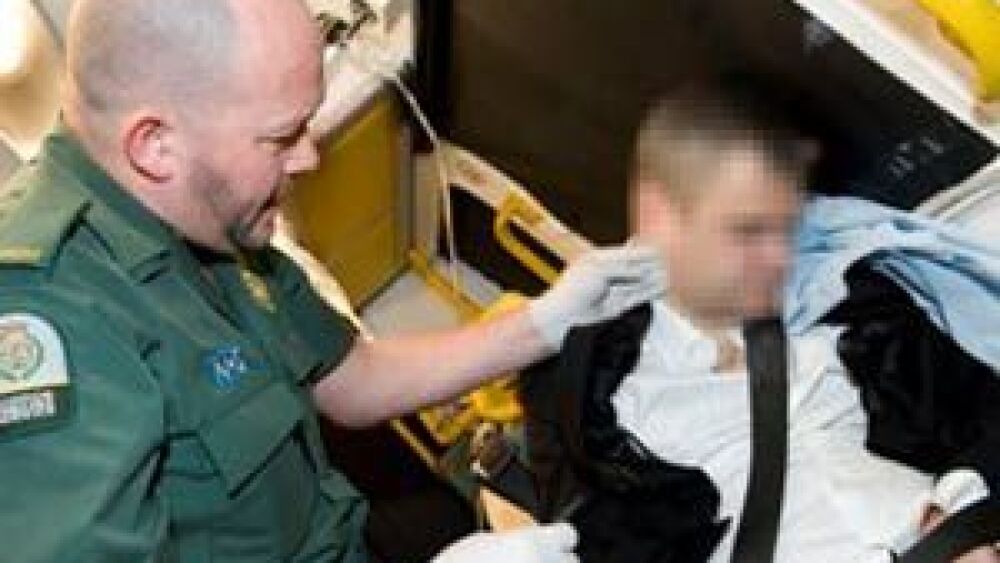In November of this year, I had the privilege of traveling to London to spend a week with the London Ambulance Service while filming a new season of the Code STEMI Web Series. It was my first trip to Europe and while I’m a fan of the Horatio Hornblower books by C.S. Forrester (depicting the Royal Navy during the Napoleonic wars) and I occasionally enjoy watching Prime Minister’s Questions on C-SPAN, I really didn’t know what to expect.
What I found was a remarkable group of men and women who run one of the largest, busiest and arguably one of the best EMS systems in the world. There were many aspects of the LAS that impressed me, including their dispatch operations (which they call their “Control Room”), and a deeply committed group of EMS professionals that respond in ambulances, cars, motorcycles, bicycles and on foot.
No one is above responding to a call in the LAS. Everyone logs into the system, including Mark Whitbread, their Consultant Paramedic (in the UK, if you’re a “consultant” it means you’re a top dog — for example the Consultant Cardiologist runs the show at King’s College Hospital — at least in the cardiac cath lab).
Mark has been instrumental in designing and overseeing the LAS’s response to acute coronary syndromes and sudden cardiac arrest.
It surprised me that someone so high up in the organization still wears the green jump suit and responds to calls, so I asked him about it. He said, “I can’t very well tell others what to do if I’m not willing to go out and do it myself!”
Similar sentiment
A similar sentiment was echoed by Jules Lockett, a highly competent woman who trains the call handlers and dispatchers in the Control Room. “It’s important that I don’t just tell them what to do but that I model the correct behaviors.”
She also wears the green jump suit of the LAS, something she explains with a smile by saying, “They say we bleed green here.” Again and again in the LAS, I met people who were very proud of their organization and the service they deliver to the citizens of London.
I found myself surprised by elegant solutions to complex problems and impressed by their work ethic and team spirit. The esprit de corps was palpable. On at least three different occasions, in different areas of the city, from completely different levels of the LAS, someone would look at me with all sincerity and say, “At the end of the day, when we lay our head on our pillow, have we done our best?”
Have we done our best?
Such a simple question but when asked in such a sincere and heartfelt way, it’s a powerful sentiment. There are so many things that can get in the way of doing our best. Politics, complacency, a lack of empowerment, poor leadership, low morale, or competing priorities.
Rare to find
Most people would be happy in a high-functioning organization that “does their best” and has high expectations of themselves and their staff. Yet, it’s so rare to find an EMS system like that.
It’s tempting to blame the individuals within the system. Why don’t EMTs and paramedics care? Why are they so apathetic? Why are they so unhappy? Why can’t they just do their job and do it well? Something must be wrong with them. If they don’t like it, they can leave! After all, there are plenty of people who would like to be in their place. Right?
I’ve been around long enough to know that it’s possible to have a “bad egg” but even in those unusual circumstances the organization probably failed to screen, train, support, evaluate, remediate, discipline and terminate for entirely too long.
It probably ignored lots of warning signs and allowed high-risk behaviors to be modeled to other employees. When behaviors like that go unchecked in an organization, what message does that send to employees who are doing their best?
I walked away from the LAS more convinced than ever that excellence starts at the top with enlightened leaders who articulate the organization’s vision and values, who are technically competent and willing to model those behaviors in an on-going basis to the line personnel, who encourage their employees to “do their best” and stand by them when they do.
Excellence doesn’t happen by accident. It’s fostered in every aspect of an organization, from selection and training to operations and quality assurance. They say culture is everything in an organization.
The LAS has a culture of excellence. So at the end of 2012 I have one simple question for every EMS chief, administrator, manager, or supervisor.
Have you done your best?













